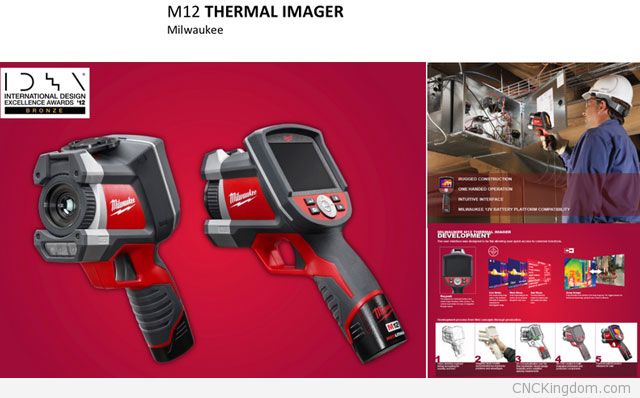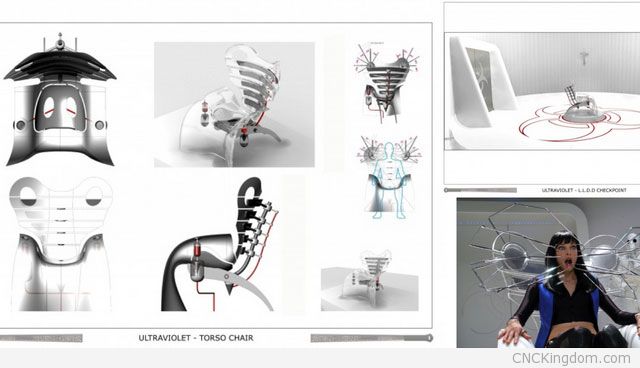Carter Wong, Designer (Hong Kong)
For over 15 years, Carter has been helping companies large and small around the world expand their design possibilities across a variety of industries from film to furniture – of course, developing innovative products as well! He’s won a number of design awards and also founded his own non-profit. He holds a Master Degree of Fine Arts in Design from Cranbrook Academy of Art and is a visiting lecturer at Hong Kong Polytechnic University.
Key takeaways from this interview:
- Help guide your clients outside of their comfort zones by becoming a story teller.
- “Made In Here” is the next “big thing” in design.
- Design for universal solutions, design for sustainability, and design for social responsibility.
- Design, Create, Think + Passion & Enthusiasm = awesome results!
You can contact Carter via his LinkedIn profile.
You have worked with some of the largest corporations in the world, from Techtronic Industries, Philips Design and Sony Picture to Whirlpool helping them to come-up with innovative designs and products. How easy or difficult was it to try to steer many levels of management and investment into new directions that were possibly outside of their comfort zone? How did you convince them to take chances?
 It was difficult, but having it easy wouldn’t make it challenging. I had to be a story teller, so I could open their eyes and give them more ideas on how we could grow the business. We not only have to think about today but also about tomorrow. By understanding trends, we will understand the future and the people’s needs and we can predict or even influence tomorrow’s trends in order to define future products and services. With this, companies are able to get ahead and stay ahead.
It was difficult, but having it easy wouldn’t make it challenging. I had to be a story teller, so I could open their eyes and give them more ideas on how we could grow the business. We not only have to think about today but also about tomorrow. By understanding trends, we will understand the future and the people’s needs and we can predict or even influence tomorrow’s trends in order to define future products and services. With this, companies are able to get ahead and stay ahead.
By understanding the key drivers of opportunities and threats that will reshape our business, we can change our playbook.
Today, designers play a significant role in the product development by creating not just products and solutions, but also changing the way people think about design and interact with the product–the whole user experience.
It is not just about good ideas but also about good business.

You’ve done an incredible amount of consulting for companies of all sizes, what are some of the challenges many of them faced and how did you help guide them to make the right decisions for themselves and the markets they serve?
They would usually face three challenges: their products or solutions weren’t innovative enough, their market share wasn’t that big, and they were not making good profit.
I would guide my clients through the innovation maze by giving them fresh ideas, showing them something new, and letting them see the big picture. We could merge various elements, such as cultural, technological, environmental, etc. The goal is to add more value into their products or solutions to differentiate them from the competition.
For example, soap and perfume. Soap is to clean, while perfume is for you to smell good. You can sell soap as it is; the same thing for perfume. By combining both, you are able to add value to the product.
Create iconic brand experience.

I absolutely love the movie Ultraviolet, I don’t know why it’s such an underrated movie as it really exposes a number of societal issues we are increasing dealing with – how did you end-up becoming a concept designer for the movie? What lessons did you learn and take away from the entire experience of working with Sony Pictures?
A production designer of the movie approached me. One thing led to another, and I ended up collaborating with them.
I had a great time working with Sony Pictures, a Hollywood company, in Shanghai. They allowed me to explore various levels of possibilities. I was able to flex my creative muscles. I was able to explore various creative zones.
The props we designed for Ultraviolet were disposable paper phone, 3D projection, anti-gravity belt and bracelet, eyewear, stun guns, weapons, and others. Those props had to blend into the futuristic stage.
Challenge conventional wisdom, and influence the future.

Can you expand on why you thought it was important to start THE WAY GROUP? There are a number of issues that affect all of us in the world, how does your no-profit organization help and what specific projects has it worked on?
I’d like to share a proverb: If you want happiness for a day, go fishing. But if you want happiness for a lifetime, helps someone else.
I appreciate that there are many charitable institutions that have been addressing various human needs. The Way Group is a think-tank group aims to bring creative design professionals together, so the group can come up with sustainable and creative solutions that would help alleviate the impacts of various manmade or natural disasters, conflicts, issues, etc.
Through our designs and creations, we hope to make life easier, better, and more beautiful. After the Sichuan earthquake in 2008, we came up with a proposal to the local government to develop foldable toilet stands, emergency school bags for kids and so on.
Design for universal solutions, design for sustainability, and design for social responsibility.
Being a guest lecturer at the Hong Kong Polytechnic University School of Design, how much of a role do you think formal academic education has on the level of success a designer will experience over the life of their career?
A formal education will lay the solid ground from where you can launch your career in design. But once you are already flying on your own, you can be creative and can explore other areas. Today’s academic education should be based on three levels: multi-driven training and education (DESIGNer), knowledge and experience enhancement (CREATEer), and research and analysis (THINKer).
The three levels–coupled with creativity, passion, and enthusiasm–will hep the designer deliver an innovative experience.
Learn the rules first, then break it.

What are your views on 3D printing? How do you think it will affect designer’s abilities to create and the world economy in general? When everybody can print anything, how do you handle fair compensation for designers with such rampant piracy?
3D printing is predicted to be one of the biggest trends in the coming years. “MADE IN HERE” will change the direction of small and medium enterprises, and individuals can even jump into the bandwagon.
With the popularity of 3D printing, I believe there will be laws in place to address unfair competition and piracy, but to be honest, it would be very hard to police. The challenge for the designers is on how to make very unique products that couldn’t be copied; maybe by making the material unique, so it’s not reproducible using 3D printers.
3D printers inspire creativity. Simply click on the button and design your next project.

